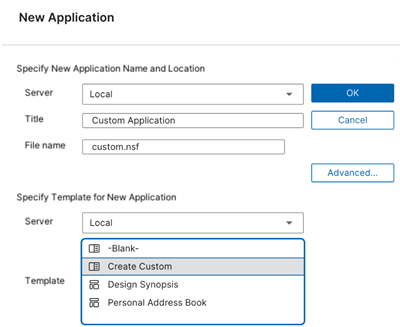在电子电路设计中,PFM(Pulse Frequency Modulation,脉冲频率调制)是一种调制技术,其主要特点是在负载变化时调整脉冲的频率,而保持脉冲的宽度(时间长度)相对恒定。与PWM(Pulse Width Modulation,脉冲宽度调制)相比,PFM在某些应用中具有独特的优势和应用场景。
In electrical design, PFM (Pulse Frequency Modulation) is a technique used to regulate the output of power electronic devices by varying the frequency of the pulses while keeping the pulse width relatively constant.
PFM 是一种脉冲频率随输入信号幅度变化的调制方式。它常用于电源管理电路。
PFM is a type of modulation where the frequency of the pulses varies according to the amplitude of the input signal. It is commonly used in power management circuits.
PFM的工作原理
PFM通过改变开关脉冲的频率来调节输出。通常在轻载或待机模式下使用PFM,因为它在低功耗状态下比PWM更有效率。具体来说,当负载减少时,PFM会降低脉冲频率,以减少开关损耗和静态功耗;而在负载增加时,脉冲频率会增加,以满足更高的功率需求。
How PFM Works
* Frequency Variation: In PFM, the frequency of the switching pulses changes based on the load demand. When the load is light, the frequency of the pulses is reduced, which minimizes switching losses and improves efficiency. As the load increases, the pulse frequency increases to deliver more power.
* Constant Pulse Width: Unlike PWM (Pulse Width Modulation), where the pulse width varies while the frequency remains constant, PFM maintains a relatively constant pulse width but varies the frequency.
PFM的应用
1. DC-DC转换器:
* 在电源管理芯片中,PFM常用于DC-DC转换器的轻载模式。通过调节频率而不是脉冲宽度,PFM可以在轻载下显著降低开关损耗,从而提高转换效率。
2. 待机和低功耗模式:
* 许多便携式设备和电池供电系统利用PFM在待机模式下降低功耗,以延长电池寿命。例如,智能手机、可穿戴设备和物联网设备。
3. 噪声敏感的应用:
* 尽管PFM的频率变化会引入一些噪声,但在某些应用中,这种调制方式可以避开特定频率的干扰,从而实现更好的信号完整性。
Applications of PFM
1. DC-DC Converters:
* PFM is commonly used in DC-DC converters, especially in applications requiring high efficiency at light loads. Examples include battery-powered devices like smartphones, tablets, and wearable electronics.
2. Power Management:
* PFM is utilized in power management ICs to achieve low power consumption during standby or idle modes. This extends the battery life of portable devices.
4. Low-Power Electronics:
* PFM is employed in circuits where maintaining low power consumption is crucial, such as sensors, IoT devices, and other low-power electronics.
PFM的优缺点
优点:
* 高效率:特别是在轻载条件下,PFM的效率通常比PWM更高,因为它减少了开关次数,从而降低了开关损耗。
* 低功耗:在待机模式或轻载条件下,PFM可以显著降低系统的总功耗。
缺点:
* 频率变化引起的噪声:由于PFM的频率是可变的,这可能会在一些应用中引入频率相关的噪声和干扰。频率变化可能导致电磁干扰(EMI)问题,尤其是在敏感的射频(RF)应用中。
* 设计复杂性:实现PFM控制可能比PWM更复杂,尤其是在需要严格控制频率和噪声的情况下。
* 响应的可预测性较低: PFM 的变频特性使其可预测性低于 PWM,从而使需要精确定时和控制的系统设计复杂化。
Advantages of PFM
* High Efficiency at Light Loads: PFM reduces the switching frequency when the load is light, minimizing switching losses and improving overall efficiency.
* Reduced Power Consumption: By lowering the switching frequency during low load conditions, PFM significantly reduces the power consumption, which is beneficial for battery-operated devices.
Disadvantages of PFM
* Variable Frequency Noise: The varying frequency of PFM can introduce noise and electromagnetic interference (EMI), which might affect sensitive circuits or require additional filtering.
* Complexity in Design: Designing circuits that effectively implement PFM can be more complex compared to PWM, as it requires managing variable frequencies and ensuring stable operation across different load conditions.
* Less Predictable Response: The variable frequency nature of PFM can make it less predictable than PWM, which can complicate the design of systems that need precise timing and control.
与PWM相比
* 效率:PFM在轻载条件下更高效,而PWM在全负载范围内表现稳定。
* 控制精度:PWM提供更精确的功率和信号控制,而PFM在低功耗和轻载条件下更具优势。
* 噪声管理:PWM的固定频率简化了噪声管理,而PFM的频率变化可能引入更多的电磁干扰。
选择PFM还是PWM取决于具体的应用需求、功率管理要求和设计复杂性。对于需要低功耗和高效率的轻载应用,PFM是一个好的选择;而对于需要精确控制和稳定输出的应用,PWM则更为适用。
Comparison with PWM
* Efficiency: PFM generally offers higher efficiency at light loads compared to PWM, which has constant switching losses irrespective of load conditions.
* Control: PWM provides more precise control over output power by varying the duty cycle, making it suitable for applications requiring fine-tuned power delivery.
* Noise Management: PWM’s constant frequency simplifies noise management and filtering, whereas PFM’s variable frequency can lead to more complex EMI and noise control issues.
总结
PFM(脉冲频率调制)在电子电路设计中是一种重要的调制技术,特别适用于轻载和低功耗的应用场景。与PWM相比,PFM在轻载条件下更高效,但其频率变化可能会引入一些噪声。因此,设计人员需要根据具体的应用需求和功率管理要求选择合适的调制方式。
Summary
In summary, PFM is a valuable technique in electrical design for applications where efficiency at light loads and low power consumption are critical. It is particularly useful in portable, battery-operated, and low-power devices, though it comes with challenges related to noise and design complexity.
如下图是一个PWM波形:

下面是一个PFM波形,后面的纹波比较大:

在系统种,当功耗较低时,就是用PFM来驱动,从信号上看,就是一会跳出一个如上图的高电平波形。
当功耗逐渐增加时,跳出的高电平方波就会更密,频率变高。
当功耗达到一定程序时,调频方式已到顶了,就转换成了PWM(Pulse Width Modulation)模式了,变成脉宽调制了。














![re题(36)BUUCTF-[WUSTCTF2020]Cr0ssfun](https://i-blog.csdnimg.cn/direct/de2da2c8346a4ebeb43aa43315e688fb.png)




